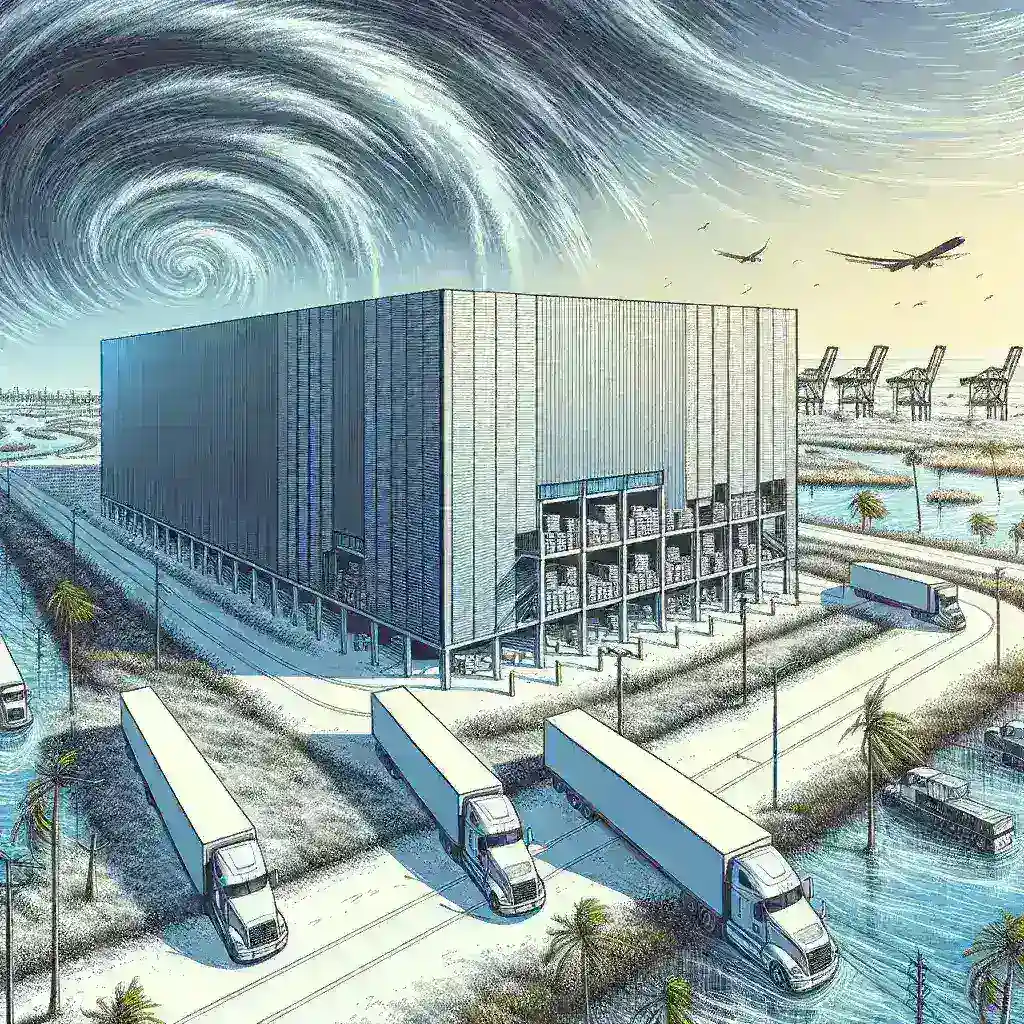Introduction
In recent years, the Gulf states have been increasingly vulnerable to severe weather conditions, particularly hurricanes. Recognizing this growing threat, Amazon has taken a proactive approach by constructing hurricane-resistant distribution hubs throughout the region. This initiative not only emphasizes the company’s commitment to resilience and innovation but also highlights the broader implications for logistics and e-commerce in disaster-prone areas.
The Need for Resilience
Hurricanes can cause significant disruptions, affecting both local communities and national supply chains. In 2020 alone, the Gulf Coast faced a record number of named storms, prompting businesses to rethink their operational strategies. The National Oceanic and Atmospheric Administration (NOAA) reported that the frequency and intensity of hurricanes are expected to increase due to climate change. As a result, businesses, especially those like Amazon that rely heavily on efficient distribution networks, must prioritize building resilience.
Historical Context
The Gulf states have a long history of devastating hurricanes. From Hurricane Katrina in 2005 to Hurricane Harvey in 2017, the region has witnessed catastrophic events that have reshaped communities and economies. These incidents have served as wake-up calls for companies operating in the area, underscoring the necessity for robust infrastructure capable of withstanding extreme weather.
Amazon’s Innovative Solutions
Amazon’s decision to invest in hurricane-resistant distribution hubs reflects its understanding of both the challenges posed by natural disasters and the importance of maintaining uninterrupted service. These facilities are equipped with advanced architectural features designed to withstand high winds and flooding.
Key Features of the Distribution Hubs
- Elevated Structures: The hubs are built on elevated platforms to mitigate the risk of flooding during storm surges.
- Reinforced Roofing: The roofs are designed to withstand high-velocity winds, reducing potential damage from flying debris.
- Robust Supply Chain Management: The hubs utilize cutting-edge technology to enhance supply chain resilience, ensuring quick recovery and efficient operations during and after a storm.
- Emergency Response Plans: Each facility is equipped with comprehensive emergency protocols that include evacuation procedures and communication strategies to keep employees and customers informed.
Economic Implications
The construction of these hurricane-resistant distribution hubs has significant economic implications for the Gulf states. Firstly, it creates jobs during both the construction and operational phases. Secondly, it enhances the local economy by improving logistics and delivery services, which are crucial for businesses and consumers alike.
Local Job Creation
Amazon’s investment in infrastructure not only brings new opportunities for employment but also supports local economies by creating a ripple effect through various sectors. The construction process involves a plethora of jobs, from skilled labor to management positions. Once operational, these hubs also require ongoing staffing, further contributing to local job growth.
Improved Logistics and Delivery Services
With the establishment of these distribution hubs, Amazon can ensure faster delivery times even in the face of severe weather. This reliability is crucial for consumers who depend on timely deliveries, especially during emergencies or holiday seasons. As a result, Amazon can maintain its competitive edge by offering services that prioritize customer satisfaction.
Future Predictions
As climate change continues to impact weather patterns, it is likely that more companies will follow Amazon’s lead in building resilient infrastructure. The trend towards sustainability and disaster preparedness will shape the future of logistics and supply chain management. We can expect to see a rise in innovations aimed at enhancing durability and efficiency in response to environmental challenges.
Broader Industry Impact
Amazon’s initiative may inspire other retailers and logistics companies to rethink their infrastructure strategies. The push for hurricane-resistant facilities could set a new standard in the industry, prompting a shift towards sustainability and resilience. As more businesses adopt similar practices, communities will benefit from reduced disruptions and an overall strengthening of local economies.
Challenges and Considerations
While the construction of hurricane-resistant distribution hubs presents numerous benefits, there are also challenges to consider. The initial investment required for building such facilities can be substantial, and businesses must weigh the costs against potential long-term gains.
Financial Implications
The financial outlay for developing hurricane-resistant infrastructure is significant. Companies must consider not only the costs of construction but also ongoing maintenance and operational expenses. However, the potential for reduced downtime and improved service delivery can offset these initial investments in the long run.
Balancing Innovation with Sustainability
As businesses strive to innovate and adapt to changing climate conditions, they must also consider the environmental impact of their operations. Sustainable practices, including the use of eco-friendly materials and energy-efficient systems, should be integrated into the design and operation of these distribution hubs.
Conclusion
Amazon’s initiative to build hurricane-resistant distribution hubs in the Gulf states represents a significant step forward in logistics and disaster preparedness. By investing in resilient infrastructure, the company not only safeguards its operations but also contributes to the economic stability of the region. As climate challenges persist, proactive measures like these will become increasingly essential for businesses aiming to thrive in a changing world.

Leave a Reply